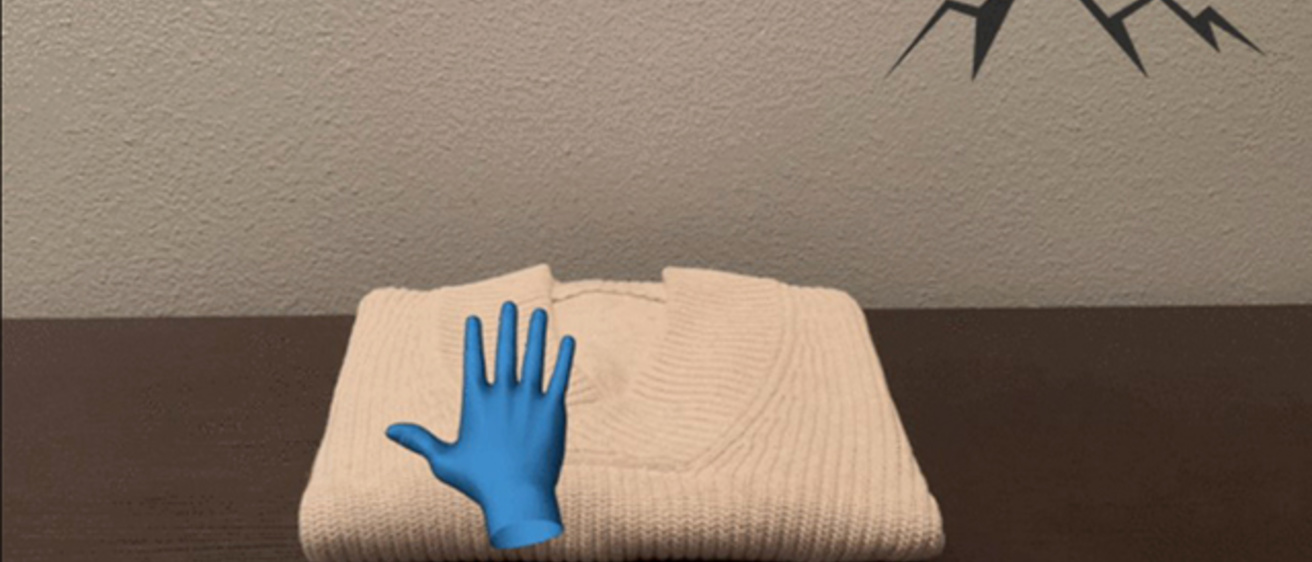by Tom Snee
Retailers know that if they can get a customer to touch what they’re selling, they’re more apt to buy it and pay more for it.
A new study from the University of Iowa's Tippie College of Business finds that this is true in a virtual world, too, when the hand belongs to someone else, or is even a cartoon. In the same way a gamer can be transported into a video game and feel themselves a part of that virtual world, seeing a virtual hand touch a sweater or a coffee pot can make our brain think we’re actually touching it ourselves.
“Observing a hand engaging in touch can increase the perception that the hand is actually the consumer’s own and that they have body ownership,” says Andrea Luangrath, assistant professor of marketing in the Tippie College of Business and study co-author. “This, in turn, increases our sense of ownership of the product, which increases how much we value the product.”
In a series of experiments, the researchers showed potential consumers photos and GIF videos of various products, some being touched by a hand, some not. In general, those looking at images or GIFs of a hand touching a rack of t-shirts or a sweater said they felt a greater sense of ownership than when they watched a video with no hand.
“We view touch as creating more of a connection to a product,” says Luangrath, calling it ‘vicarious touch.’ “We feel this hand is our own. The line becomes blurred between the virtual hand and our real hand, so we think, ‘the hand is mine and the product it’s touching is mine.’”
She says this effect is so strong it doesn’t matter if the hand is black, white, or even blue. In one experiment, people viewing a digitally-produced disembodied blue cartoon hand feeling a sweater said they were more apt to buy it and to feel it was of high quality than they were when they saw the hand not touching the sweater.
Luangrath says they even found some peoples’ heart rates increase from vicarious touch and those people were willing to pay even more for the touched product.
Of importance to online retailers, she says the study found vicarious touch increases the sense of psychological ownership of the product, making it more likely the consumer will not only want to buy it but also pay more for it.
Luangrath said the experiments also showed the limits of fake hands. If the customer is specifically told the hand is not their own, they don’t see it as their own. It also found that the hand has to actually be touching the product for the online consumer to make the psychological connection. Just having a hand in a photo is not enough.
She says many retailers are starting to make initial forays in to using virtual and augmented reality as online sales tools, and knowing how to connect the shopper to something they can’t touch will be an important part of closing the sale. At the same time, she said consumers would find it helpful to know how retailers are building emotional connections in ways they don’t even know is happening.
The study, “Observing Product Touch: The Vicarious Haptic Effect in Digital Marketing and Virtual Reality,” will be published in a forthcoming issue of the Journal of Marketing Research. It was co-authored by Joann Peck of the University of Wisconsin-Madison, William Hedgcock of the University of Minnesota, and Yixiang Xu of the University of California, Berkeley.
MEDIA CONTACT: Tom Snee, 319-384-0010 (o); 319-541-8434 (c); tom-snee@uiowa.edu
